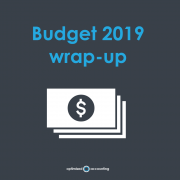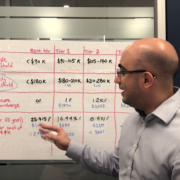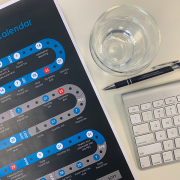PAYG Instalments, something that alot of our clients get confused about.
Pay as you go instalments (PAYG) get issued by the ATO, and you get sent a welcome or adjusted letter.
But do you understand it? Shaun Farrugia explains all you need to know here.
The entire video (6 minutes) can be viewed here:
Or we’ve broken it down into shortened videos to help explain specific FAQ’s:
1. First of all, what is a PAYG Instalment?
A PAYG instalment is basically an amount of your own personal income tax that the ATO is asking from you, and this goes towards future tax bill you will receive.
Usually how people get entered into PAYG instalments is basically by the ATO. So what will happen you’ll lodge your tax bill, you’ll lodge your tax return. You might get a tax bill for let’s call it $95,000. On that $95,000 it’ll say that it might be due for payable in a month or two, or maybe six or nine months, depending on how early you lodge the tax return.
What happens after that is you then get a letter saying, “Welcome to PAYG instalments,” if this is your first tax payable in Australia. Or you get a letter saying, “Your PAYG instalments have been varied.”
Now, what both of these are are one in the same thing. It’s the ATO saying you’re going to be paying tax quarterly from now on, and it’s basically a letter saying how much they expect from you.
2. Does this amount go against the tax return that I just lodged?
Now, what people then often ask, is does this PAYG instalment amount go against my income tax bill that I’ve just received on my notice of assessment?
Simple answer is no it doesn’t.
That amount is still due and payable based on what the notice of assessment says. The PAYG instalment purely goes against your next tax return.
3. How much do I need to pay per quarter, and how is my PAYG calculated?
The next question we get asked is, how much do I need to pay per quarter? How is it all worked out? Now, I do believe the letters from the ATO are vague and they are actually a little bit scary to read, so we don’t blame clients for not really understanding this. We try to make it as easy as possible in our intro emails, but I think people tend to get spooked by the large number that shows up.
So the way it generally will get calculated is, let’s say you had that $95,000 tax bill.
The ATO are forever the optimists.
They believe next year not only will you earn a similar amount again, but you’ll actually exceed it and have a $100,000 tax bill. So from $95 last year they go, “We’ll take a punt that you could owe a hundred.”
And then you can have this amount how often you pay quarterly.
Now this confuses people because it’s, “What, I have to pay $100,000 quarterly? What the hell is going on here?” This just does not work.
Now, it is misleading. It is actually very difficult to understand. The way that the ATO calculate it can vary between payers, but the way it should work is as follows.
Say you lodge your tax return and you’ve lodged it just prior to the first BAS of the financial year. They want a $100,000 from you next financial year. Okay, that’s great. You’ll pay your $95,000 as and when it falls due in a few months’ time, then for the current financial year, what they’re wanting to do is make sure that you’re paying tax that are currently more aligned for when the income is actually being earnt.
So on your September BAS they’ll say, “Okay. Well, $100,000. We want $25,000 from you in this quarter.” In the December BAS, same again. In the March BAS, we’ll go again, and then June, they’ll ask for the same amount.
So by the time you get to the end of the 2019 financial year, you’ve paid what the ATO has expected, and if your income does remain pretty static to the previous year, you won’t have a large payable or a large refund. Everyone goes on their own.
Now, the next question we get is usually no one’s really lodged their business return prior to the September quarter. Let’s say you’re lodging it now, so early March, and you’ve got the March BAS and the June BAS ready to go. If you’ve never paid any tax instalments before, what the ATO can actually do is they’ll say, “Oh, we want $100,000.” There’s six months left of the financial year. What they might do is make it $50K and $50K.
Now, this can come as a bit of a shock because it’s a bit of a cash flow squeeze, especially if you’ve been on a honeymoon period where you haven’t paid progressive tax in Australia for long. You might have your $95,000 payable that was for income earnt up to 18 to 20 months ago and then be asked for March and June separately as well. So the ATO can ask for it like that.
But the ATO’s treatment of this is very, very inconsistent.
While the ATO should ask for that, if you paid smaller instalments in September and December, they will credit those off. So if you’ve made $10,000 payments quarterly in the past and you’ve received a variation notice, then these amounts would be $40K and $40K, for argument’s sake.
But what the ATO can do, sometimes they do have a heart and a little bit of mercy and what they’ll do is actually keep them the normal 25 as it should go going forward, and then you’ll obviously have the remainder to pay when you do your tax return. It’s hard to not be able to give a definitive answer on this, but the truth is is the ATO is inconsistent and trying to work out their logic is extremely difficult. That’s assuming that there is logic.
Now, how do I vary these instalments?
Now let’s say your income has dropped for the financial year and you think that you’re only going to have to pay 50,000 in tax in total. Now we’re using large numbers here, but nice and round ones. Don’t be too worried about the dollar figure.
On that 50k, what you would do is we then can vary these instalments downwards as you go, so there’s no need to ever pay a large amount in tax that is not going to be relevant for the end of the financial year. We vary them down to make sure you’re only paying what you should pay.
With all of our clients, at least, is we provide an income tax forecast for you. So what we do in that forecast is it’ll actually say what we’re expecting your tax to be, and we can then vary that amount on the income tax instalment for you. So as long as we complete your BAS by the due date, so if you are having very large instalments, it’s imperative you get information to us soon as you can so we can complete the lodgement and vary the instalment down if that’s what’s required.
Now, if your income has increased, do you need to increase your instalments?
The short answer is no you don’t. There’s no obligation to. All it means is on our forecast, we’ll tell you how much to put aside and you just put that into your savings account and you can give it to them at the end of the year. Otherwise if you’d prefer to get it out of the way and have it out of sight, out of mind, yes we can vary the instalments up.
If you receive a PAYG Instalment letter from the ATO and are a bit confused about it, hopefully this will help.
Learn more tips for optimising your business
There are many tricks to the trade, and if you want to make the most of them to grow your business, jump into our email newsletter:










